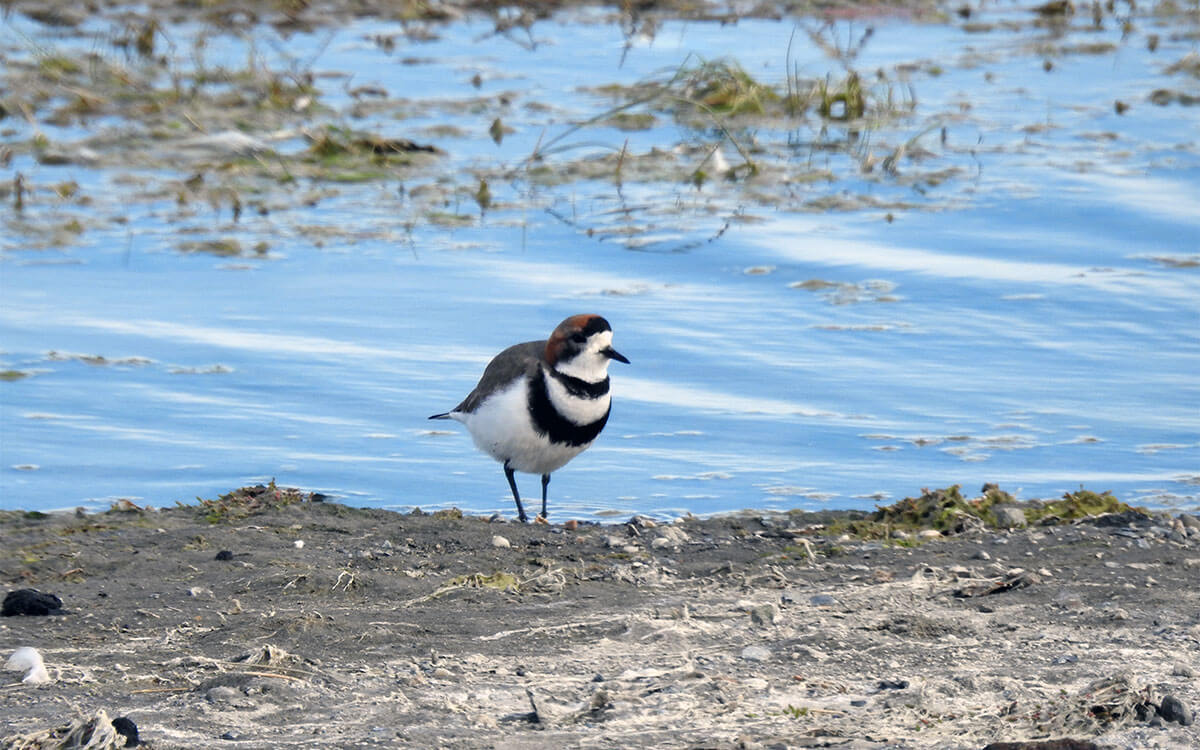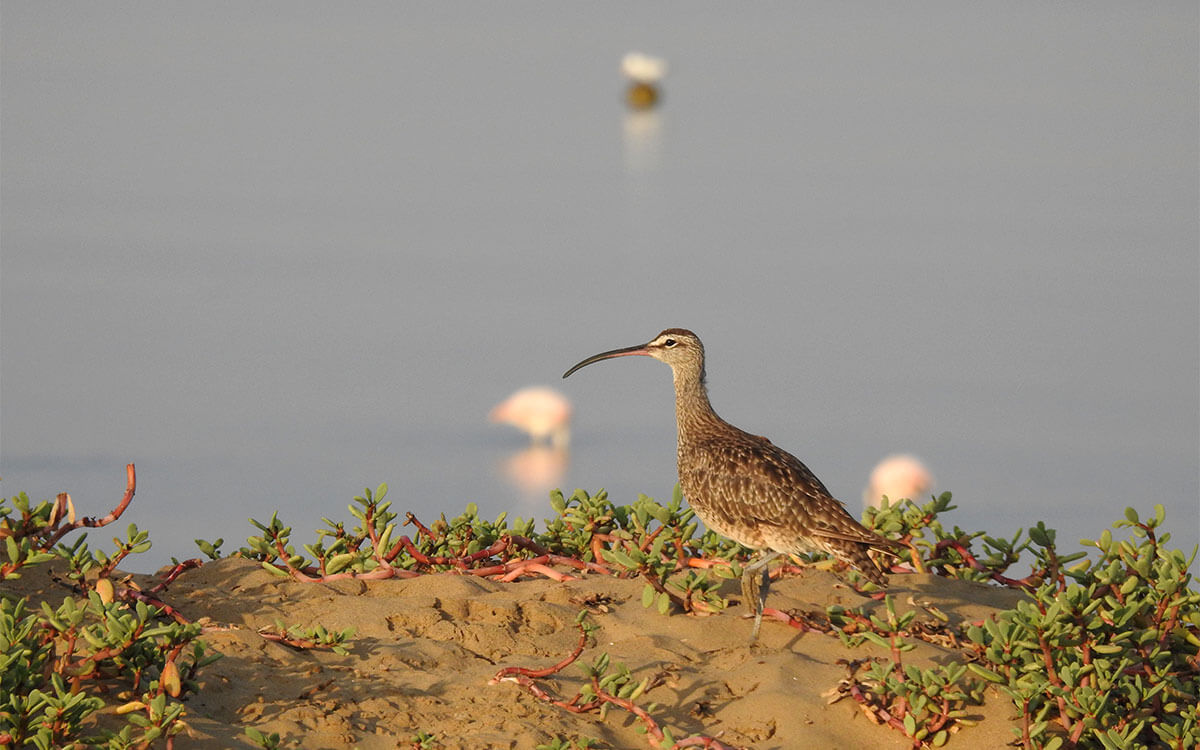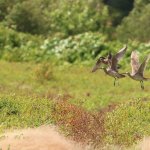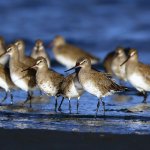In January 2019, a “flock” of more than 500 volunteer shorebird enthusiasts surveyed beaches, mudflats, dunes and estuaries from northern Peru around the tip of the Americas (Cape Horn) to southern Brazil. The goal? To better understand the distribution and abundance of shorebirds along the Pacific and Atlantic coasts of Southern South America, and identify key sites for their conservation.

Two foraging Sanderling at WHSRN Site “Reserva Nacional Paracas” in Peru. Sanderling were the most numerous species recorded during the coastal survey. Photo credit: Arne Lesterhuis.
Surveyors followed the protocol developed by the Program for Regional and International Shorebird Monitoring (PRISM) and previously used for coastal surveys in Peru (in 2010 and 2014) and Chile (2014). The results of those surveys were published as shorebird atlases (Peru – Senner and Angulo 2014; Chile – Garcia-Walther et al. 2017). Both atlases showed comprehensive shorebird surveys to be a great tool for helping to set national population estimates and to identify important sites. But perhaps more important is the opportunity the surveys provide to engage volunteers, helping to build a broad “constituency” for shorebird monitoring and conservation.
The success of the surveys in Peru and Chile triggered interest in expanding efforts to the Atlantic coastline, which was made possible in January 2019 through a grant from the Neotropical Migratory Bird Conservation Act (NMBCA). To prepare volunteers prior to the survey, 20 workshops (including online webinars) were held in the five participating countries, training a total of 306 volunteers in shorebird identification and the survey protocol.


Left: The Two-banded Plover (Charadrius falklandicus), pictured here at WHSRN Site “Estuario del Río Gallegos” in Argentina, was one of the most common resident species in South America recorded during the coastal survey. Right: A Whimbrel (Numenius phaeopus), a commonly-observed migrant during the coastal survey, with the WHSRN Site “National Reserve Paracas” in the background. Photos: Arne Lesterhuis.
An impressive 532 volunteers counted shorebirds at a total of 300 sites, covering nearly 1,000 count plots and sampling a total length of coastline of about 11,000 km (6,835 miles). A total of 128,462 individual shorebirds were counted of 47 species. Of these, 26 species breed in North America, 20 in South America and one in Antarctica. Of the North American breeders, the most numerous species recorded were Sanderling (Calidris alba) (27,140 individuals), White-rumped Sandpiper (C. fuscicollis) (10,866), Hudsonian Godwit (Limosa haemastica) (8836) and Whimbrel (Numenius phaeopus) (6255). Among the resident species, the most common were Black-necked Stilt Himantopus mexicanus (6498 individuals), American Oystercatcher Haematopus palliatus (5429) and Two-banded Plover Charadrius falklandicus (5023). Surveys were conducted at 16 WHSRN sites, while the results identified 13 sites as potential WHSRN sites, where counts for at least one shorebird species reached 1% or more of the biogeographic population.
The data are currently being analyzed to generate estimates of the populations of non-breeding shorebirds along the coast of southern South America. This work is being led by Nathan Senner, Ph.D. (Senner Lab, Department of Biological Sciences University of South Carolina), co-coordinator of this survey and the previous two, and assisted by his Ph.D. students Julián Garcia-Walther and Fernando Faria. Stay tuned for more information!






